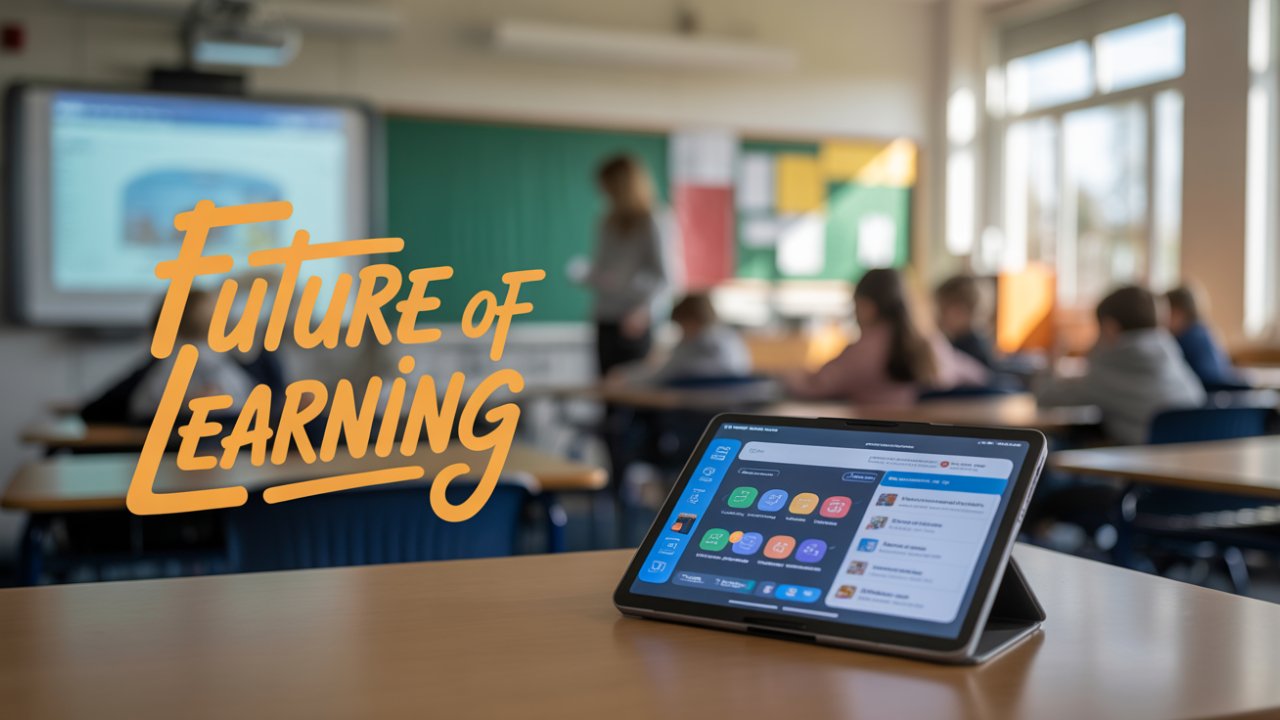Over the past few years, technology has completely transformed every aspect of our lives, and education is no exception. Earlier, classrooms were centered around blackboards, white chalk, books, and notebooks. Today, those same classrooms have evolved into digital and smart classrooms. Learning is no longer limited to textbooks alone; it has become interesting and fun for students, while teaching methods have also greatly improved for teachers.
As David Warlick said, “We need technology in every classroom and in the hands of every student and teacher because it is the pen and paper of our time, and it is through this that we see the world.”
What Are Smart Classrooms?
A smart classroom is a learning environment where modern technology and digital tools make teaching and learning easier, more engaging, and more effective. These tools include computers, specialized software, internet access, audio-visual equipment, interactive whiteboards, digital panels, and more.
With these technologies, teachers prepare multimedia lessons so that students don’t just memorize textbook content, but actually understand concepts. This changes the way students perceive education and increases their interest in learning.
Key Equipment in Smart Classrooms and Their Functions
Smart classrooms use various equipment that enhance both teaching and learning. Let’s explore some of these in detail:
Digital Podium
An integrated system equipped with a microphone, recorder, speakers, and document visualizer. This helps teachers deliver their lectures smoothly to the entire class without interruptions.
Graphics Tablet
A digital tablet that allows students to take notes, draw diagrams, and make sketches during lessons. It reduces the dependency on physical books and simplifies learning.
Interactive Whiteboard (Smartboard)
An advanced version of the traditional whiteboard, featuring a touchscreen and built-in smart class applications. Teachers can write or draw directly on the screen and display videos or animations to aid learning.
OMR Scanner
Used for exams and tests, students fill in bubbles on multiple-choice answer sheets. This technology speeds up evaluation and ensures accuracy.
Interactive Display Panels
Large LED screens used to display videos, images, and 2D/3D animations, making visual learning more effective and engaging.
Student Response System
This system instantly records students’ answers and provides real-time feedback to teachers, saving time and paper during assessments.
Speakers and Wireless Microphones
These ensure the teacher’s voice reaches every corner of the classroom, so no student misses out on any part of the lesson.
Document Camera
Allows teachers to project documents or book pages onto a large screen, helping students understand complex topics clearly.
Educational Software
Smart class apps support curriculum delivery, track student attendance and performance, and help teachers create exam schedules.
How Are Smart Classrooms Changing Schools?
If your school hasn’t yet adopted smart classroom technology, now is the time to consider it. Here’s why:
1. More Engaging and Interactive Learning
A Gallup survey found that student engagement increases by up to 55% with the use of smart technology. Devices like computers, tablets, and interactive boards transform previously dull subjects into exciting and interactive experiences.
2. Flexible Teaching and Learning
Every student learns differently and at their own pace. Some grasp concepts quickly, while others need repetition. Smart classrooms allow teachers to customize lessons to fit each student’s learning style and speed, making education more personalized.
3. Easy Access to Online Resources
Connected digital displays and projectors give students and teachers access to a vast world of online resources. This boosts students’ knowledge and creativity, as teachers can also use videos and web content to explain topics better.
4. Enhanced Collaboration and Teamwork
Interactive technologies such as smartboards encourage students to collaborate more effectively. They can share digital notes and ideas easily, fostering teamwork and improving study outcomes.
5. Increased Productivity
Multimedia presentations using audio, video, and animations help students understand concepts quickly and deeply. Teachers can manage calendars and assignments online, saving time and increasing efficiency.
6. Environmentally Friendly
Smart classrooms use eco-friendly devices like laptops and tablets, reducing the need for traditional stationery such as paper, pens, and pencils. This supports green initiatives by lowering paper consumption and promoting sustainability.
LEAD Smart Classrooms – Bringing Technology to Schools
LEAD, India’s largest school edtech company, has empowered over 3500 schools with smart classroom technology. LEAD’s smart classrooms include:
- 100% smart classrooms
- Smart TVs with audio-visual content
- Grade-specific activity kits
- Preloaded tablets for teachers
- Immersive learning environments for students
- Advanced digital classroom solutions for impactful teaching
- Real-time student assessments
- The LEAD app supporting multimodal learning
- Comprehensive classroom data access for principals and school owners
With LEAD, schools can offer world-class education and prepare students for the future.
Conclusion
Smart classrooms have revolutionized education by making learning interesting, effective, and confidence-boosting for students. If your school hasn’t yet adopted smart classrooms, now is the perfect time to do so.
Partnering with an edtech leader like LEAD can modernize your school and prepare students for a rapidly changing world.
Contact LEAD today to learn more and start your smart classroom journey.
